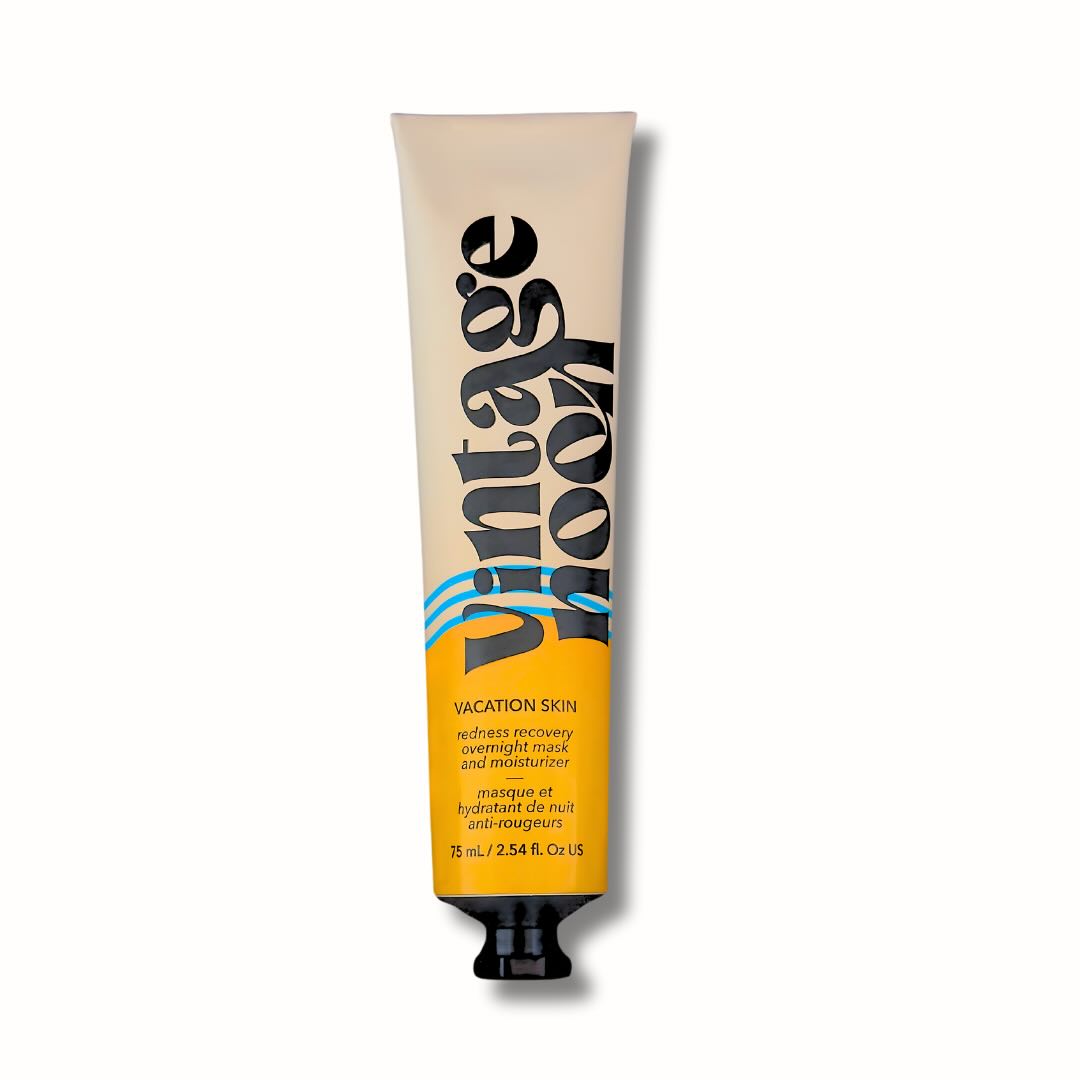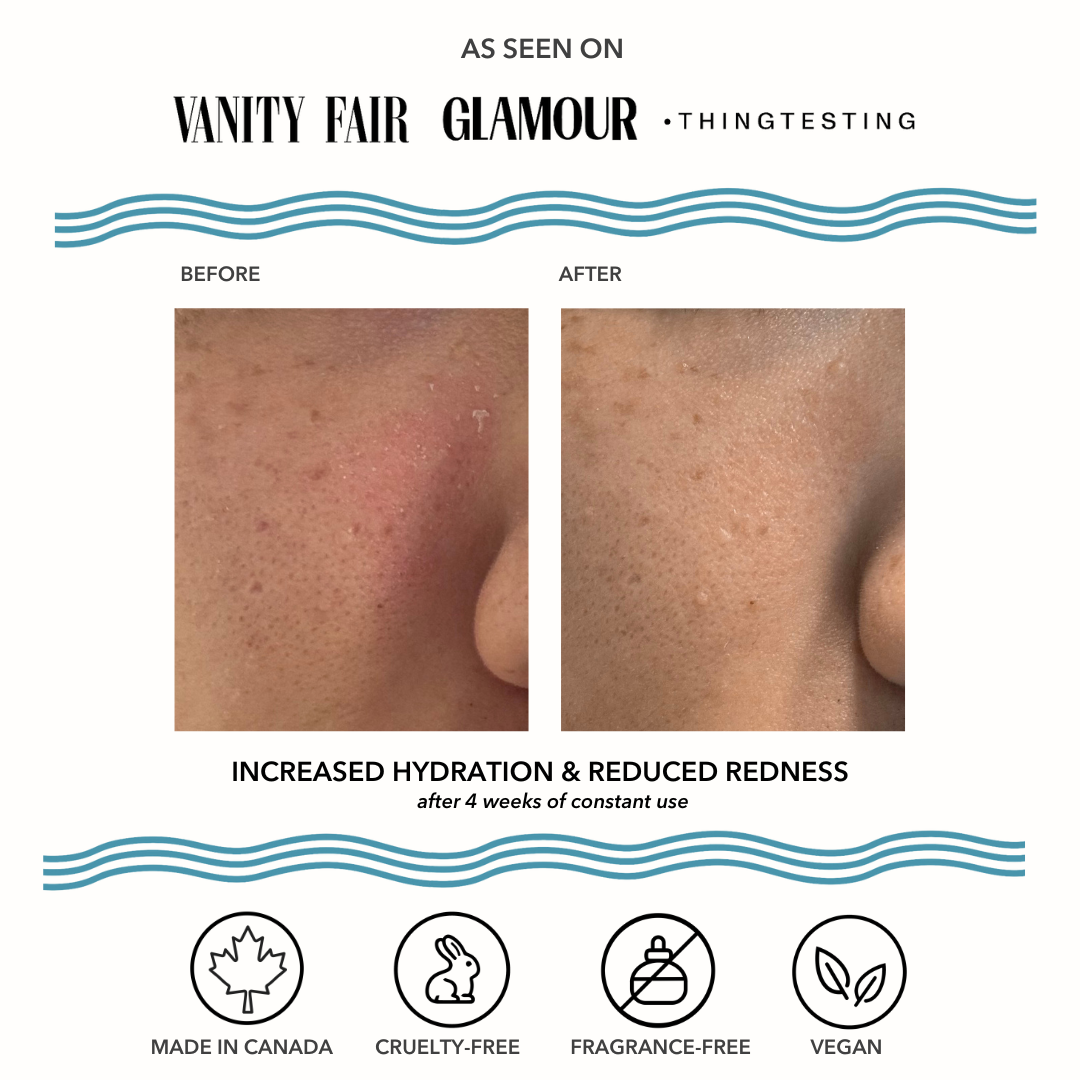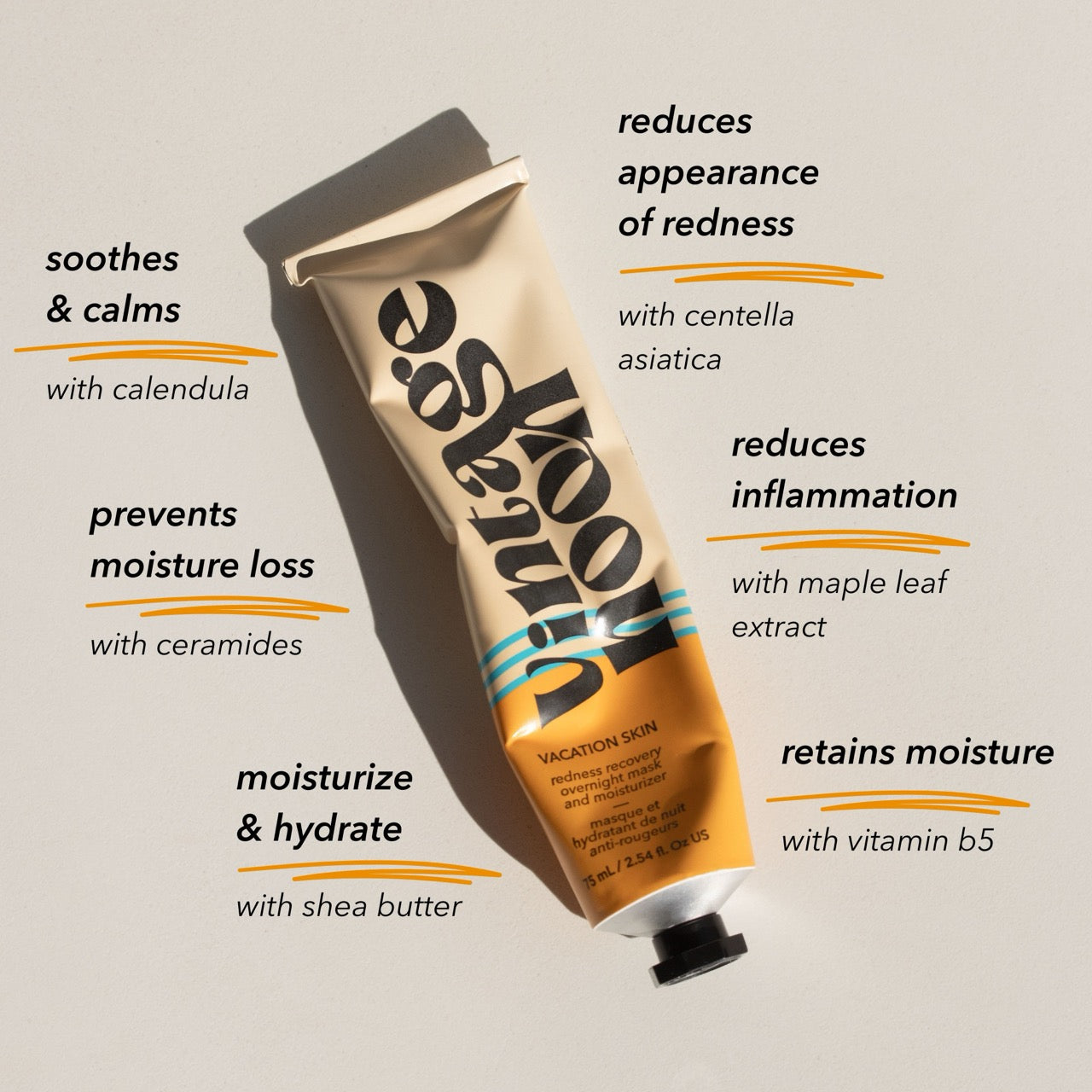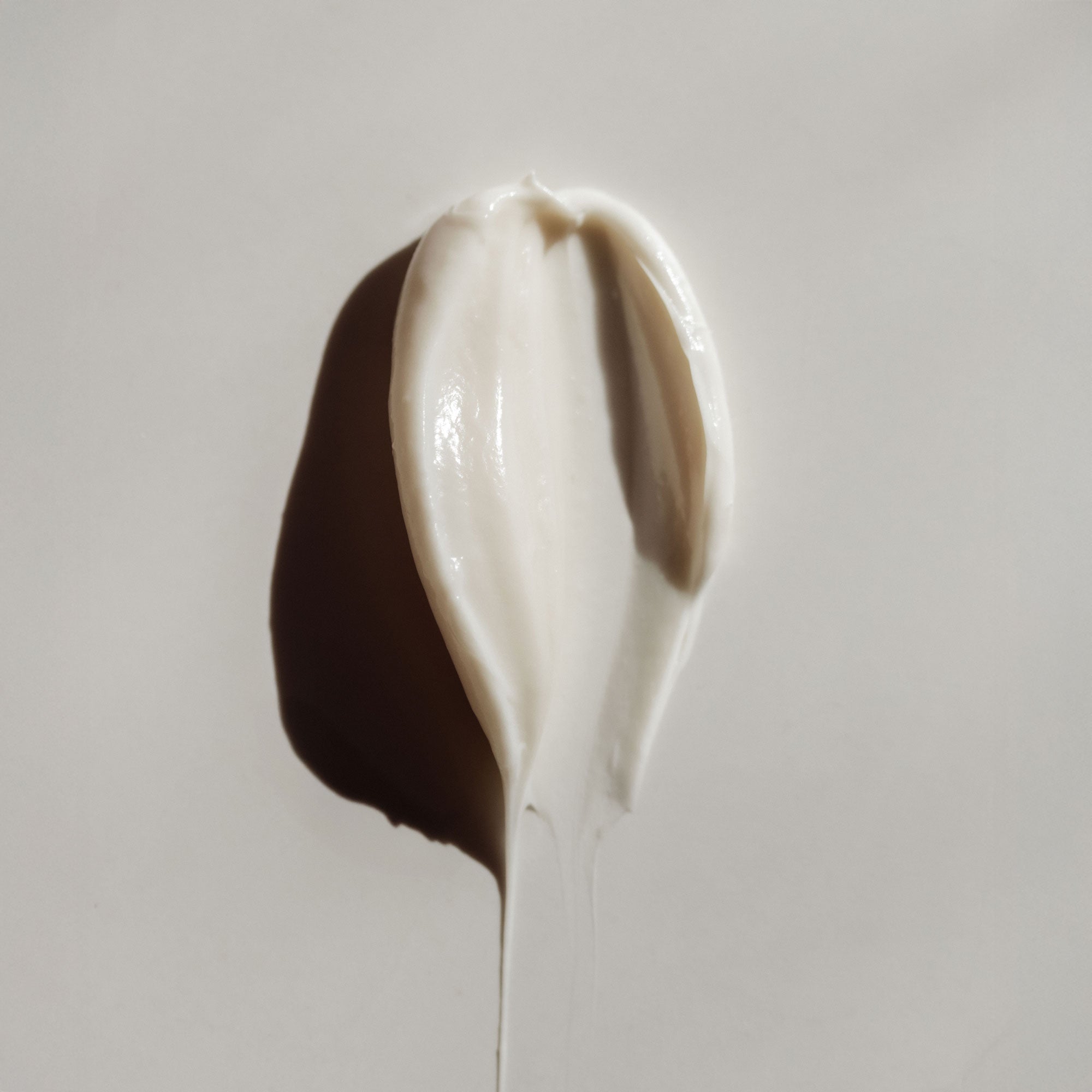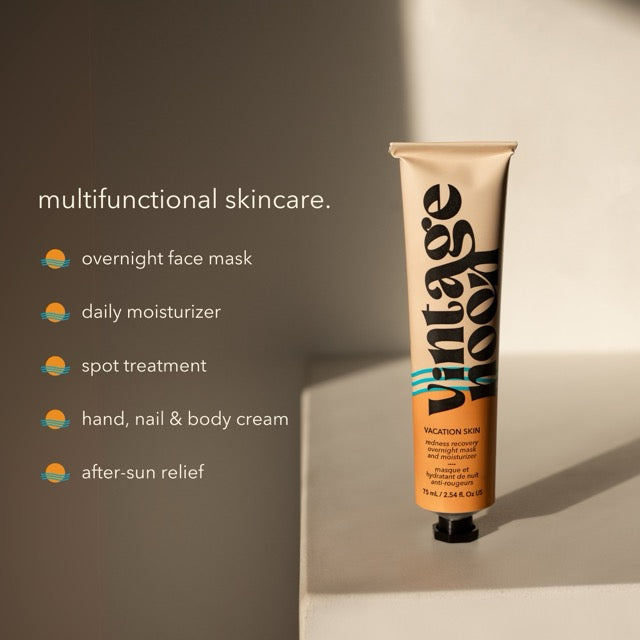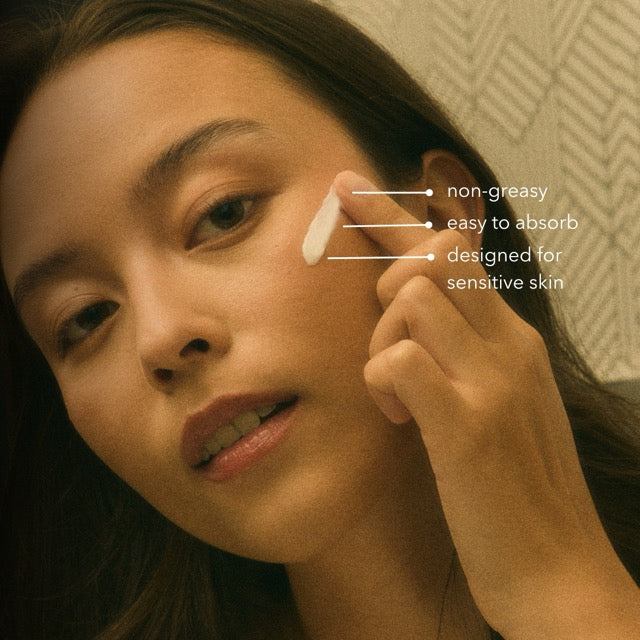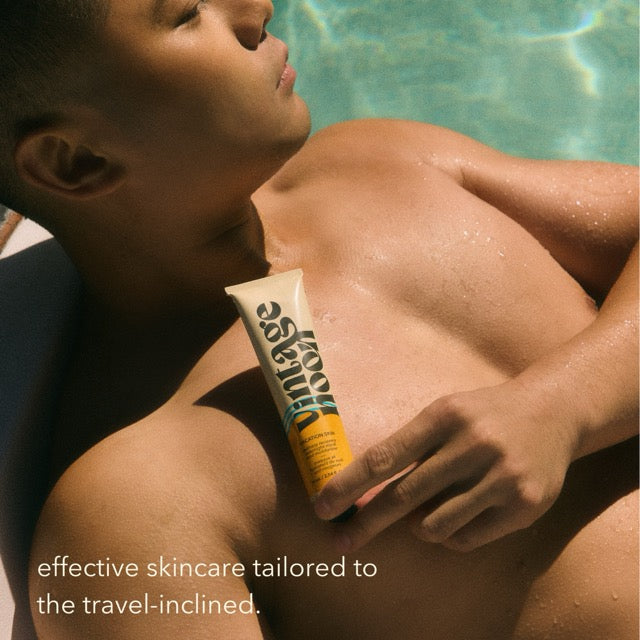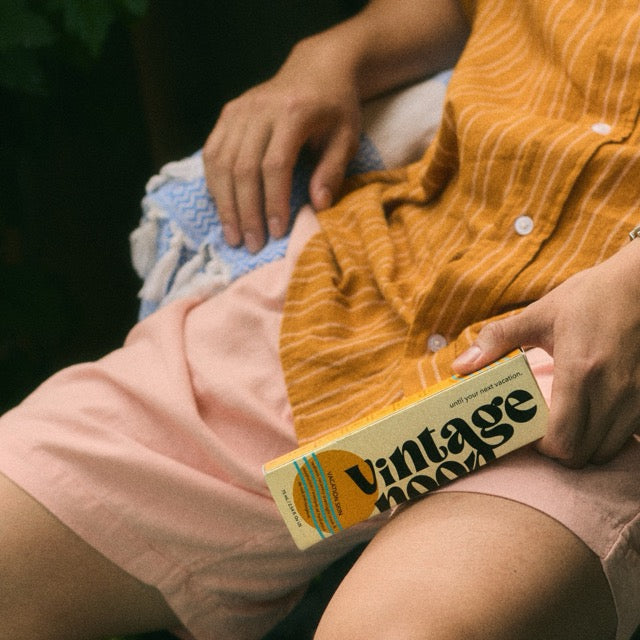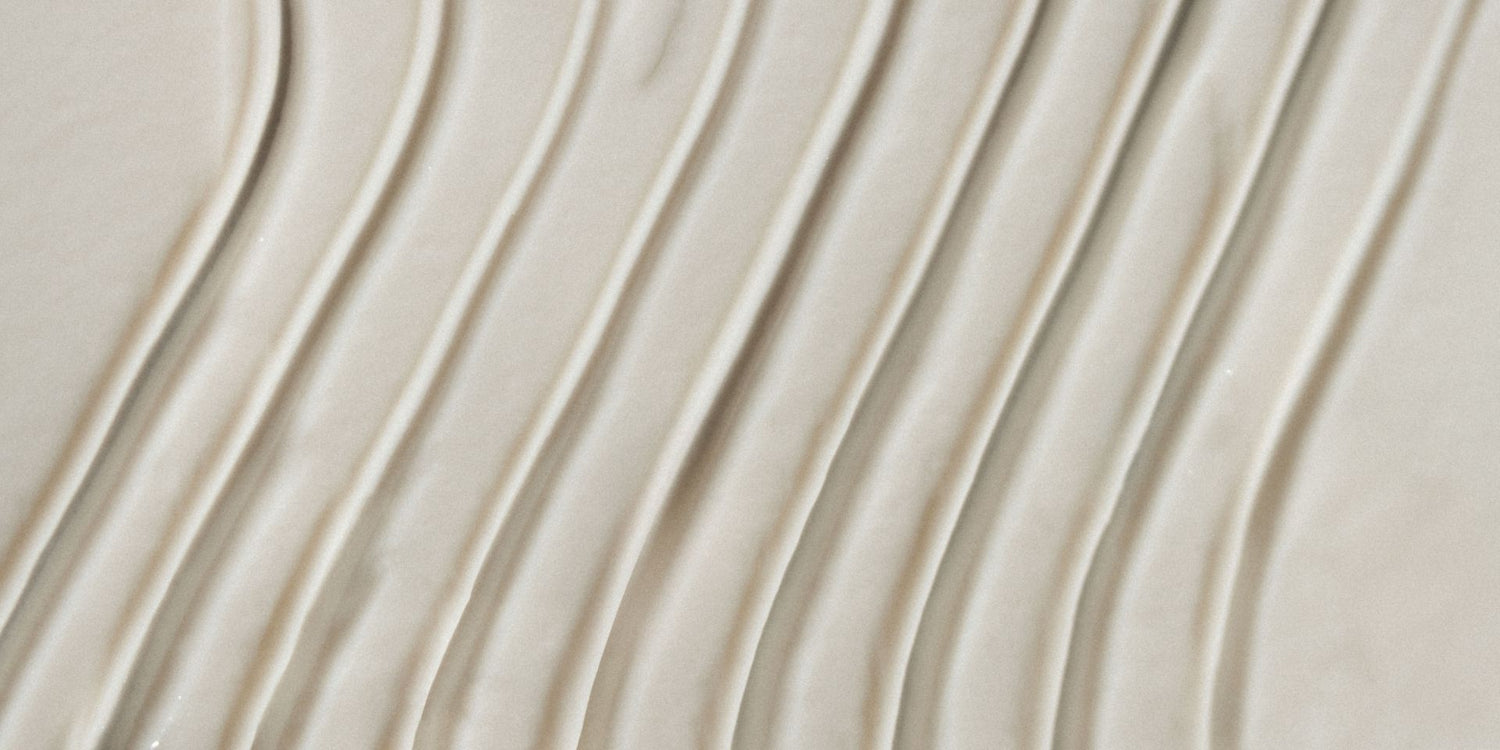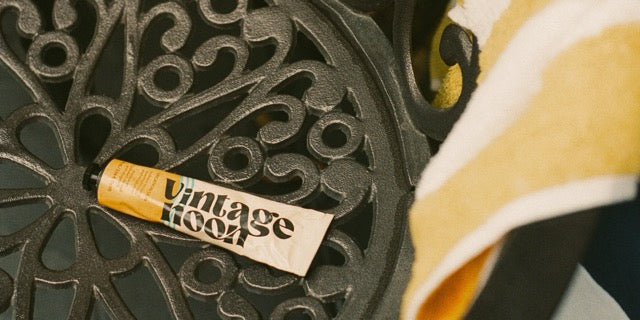What London Taught Us About Skincare, Retail, and Sensory Experience
London has long been a hub for innovation in beauty and wellness. From its mineral-rich water to its globally recognized retail design, this city offers insights that extend far beyond trends. For skincare brands focused on barrier repair and sensitive skin, there’s a lot to learn from the London approach.
1. Mineral-Rich Water and Skin Health
Compared to the harsh, hard water often found in Canadian cities, London’s softer, mineral-rich water can make a noticeable difference in skin texture, hydration, and redness. Many visitors report a visible improvement in skin clarity within days of arrival.
At Vintage Noon, we formulated our Vacation Skin Redness Recovery Overnight Mask & Moisturizer to do just that, provide that skin clarity travel-glow!
This aligns with growing demand for barrier-repair skincare that supports skin resilience when environmental stressors — including water quality — vary.
Search Trend Note: Interest in “skincare after travel” and “repair skin after flight” continues to climb globally. Products that focus on calming, restoring, and rehydrating are increasingly top of mind for consumers.
2. Retail as Immersive Experience
In stores like Liberty London and Space NK, beauty is displayed not as a commodity but as a story. Staff are trained to guide customers through texture, purpose, and ritual — and visual storytelling is embedded in every touchpoint.
For skincare brands, the takeaway is clear: presentation matters. Pop-ups and retail displays should be immersive, thoughtful, and multisensory. Creating a “moment” around the product helps customers understand what it’s for, how it feels, and why it matters.
Inspiration: Vintage Noon’s next generation of market displays will feature design cues inspired by London’s floral installations and clean, editorial shelving systems — reimagined for mobile retail.
3. Scent as Emotional Connection
From candle studios to botanical perfume bars, London emphasizes fragrance as an extension of memory. Brands are leaning into soft, natural scent profiles with notes like neroli, bergamot, heliotrope, and tonka bean — many of which evoke travel, calm, and warmth.
This ties into skincare’s evolving identity. Today’s consumers aren’t just looking for results — they’re looking for an experience. A hydrating face mask that feels like golden light and comfort? That’s skincare for the senses. Rest assured, our face mask will remain fragrance-free, but as we develop our expertise in scent, there maybe other avenues where fragrance can come into play at Vintage Noon.
4. Barrier Repair Is a Global Priority
British pharmacies prominently feature products for barrier support, rosacea, and post-treatment skin. In-store signage highlights ingredients like Centella Asiatica, ceramides, and panthenol — a clear sign that sensitive skin is no longer niche, but mainstream.
For Canadian-made brands, this is a strategic advantage. Our climate demands skincare that does more than moisturize — it must protect, calm, and adapt to fluctuations in temperature, humidity, and water quality.
Final Takeaways
-
Water impacts skin more than we think. Travel reinforces the need for restorative, barrier-repairing products.
-
Retail should feel immersive. Visual storytelling and sensory environments create stronger brand connections.
-
Scent influences loyalty. A signature note can turn a product into a ritual.
-
Barrier care is borderless. Brands that prioritize calming, fragrance-free, ingredient-driven solutions are meeting global demand.
Looking for skincare that adapts to your environment? Explore Vacation Skin Redness Recovery Mask — a face moisturizer for sensitive skin that supports your barrier overnight.












